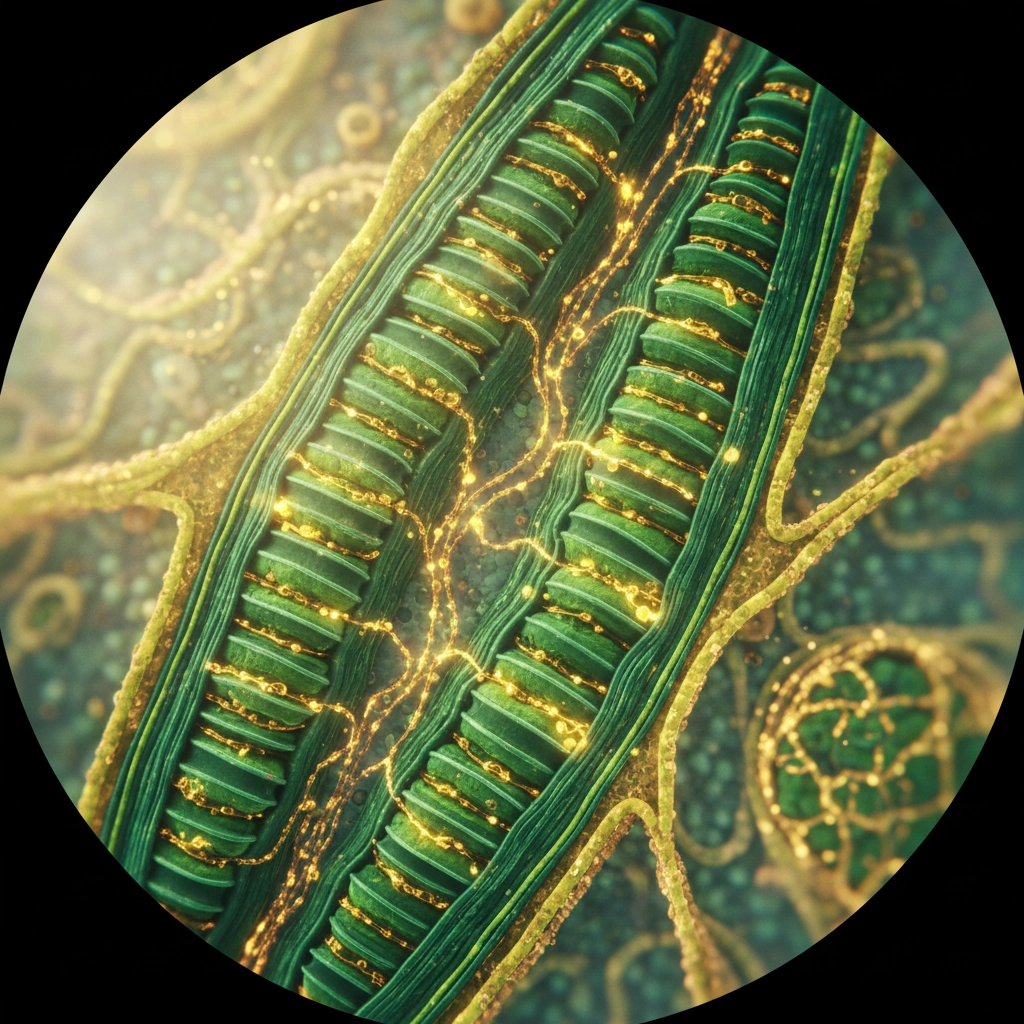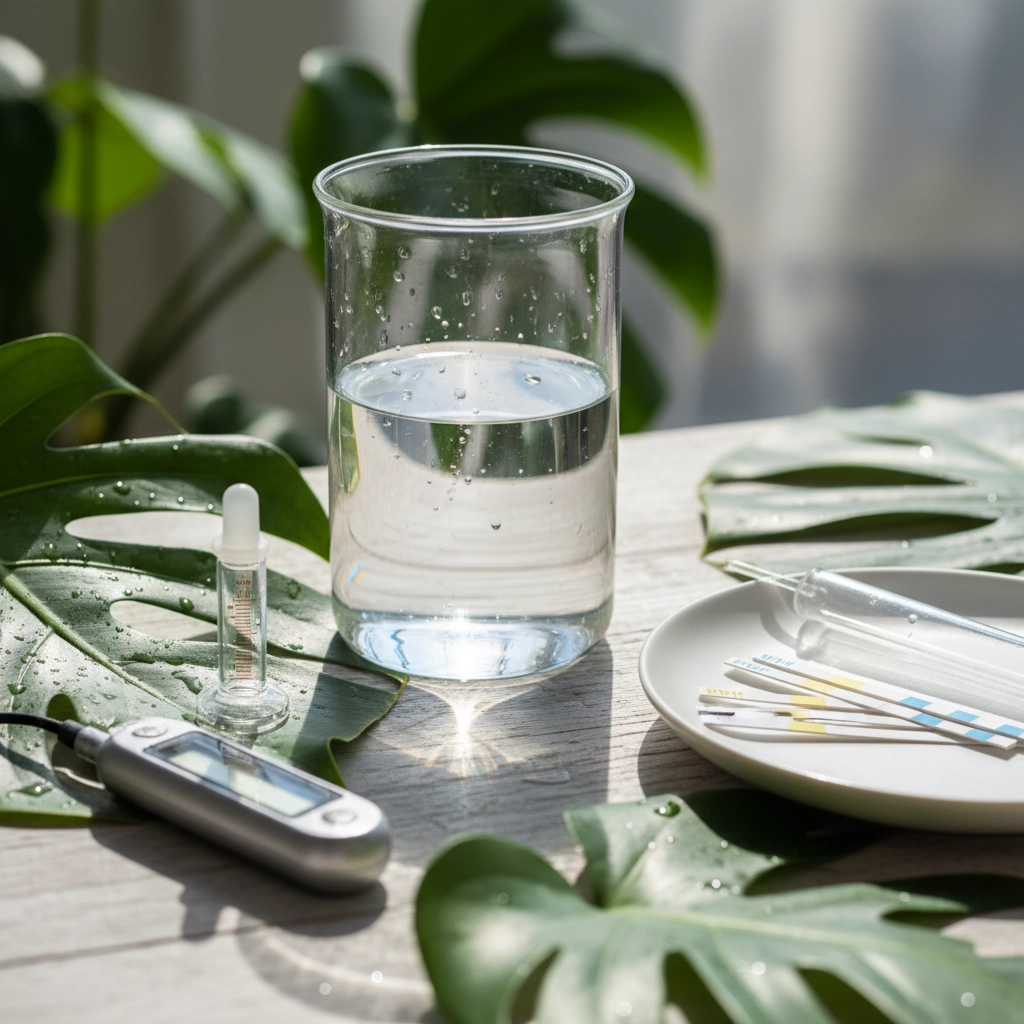Blog
ATP: The Hidden Energy Currency Powering Your Plants Growth
Every thriving plant in your garden operates on a molecular economy you can't see: one powered entirely by a tiny molecule called ATP (adenosine triphosphate). Think of ATP as the universal cash that plants use to pay for every biological process, from absorbing nutrients through their roots to converting sunlight into sugar. Without sufficient ATP production, even the healthiest-looking plant will struggle with growth, nutrient uptake, and stress resistance.
Understanding how ATP works in your plants isn't just academic knowledge: it's practical information that directly impacts your growing success. When you optimize the conditions for ATP production, you're essentially giving your plants the energy reserves they need to maximize growth, resist disease, and produce better yields.
What Makes ATP the Perfect Energy Currency
ATP functions as the universal energy molecule because of its unique chemical structure. It consists of adenine, ribose sugar, and three phosphate groups linked together. The magic happens in those phosphate bonds: when your plant needs energy for any cellular process, ATP releases one phosphate group, transforming into ADP (adenosine diphosphate) and releasing approximately 7.3 kilocalories per mole of energy.
This energy release powers everything from protein synthesis to nutrient transport across cell membranes. The beauty of ATP is that it provides just the right amount of energy for most cellular reactions: not too much to cause damage, not too little to be ineffective.

Your plants constantly cycle through ATP and ADP, rebuilding ATP from ADP when energy is available (like during photosynthesis) and breaking it down when work needs to be done. This continuous cycle means that maintaining optimal ATP levels requires consistent energy input through proper lighting, nutrition, and environmental conditions.
How Photosynthesis Generates Plant Energy
During daylight hours, photosynthesis serves as your plants' primary ATP factory. The process begins when chlorophyll molecules capture light energy and channel it through photosystems I and II. This light energy drives electron transfer through what scientists call linear electron flow (LEF), which both reduces NADP⁺ and creates an electrochemical gradient that powers ATP synthesis in the chloroplasts.
The light-dependent reactions produce both ATP and NADPH, which then fuel the Calvin Cycle where carbon dioxide transforms into glucose: your plant's primary stored energy source. However, this system faces a significant challenge: the ATP and NADPH produced by standard photosynthesis don't always match the ratios needed for optimal carbon fixation.
To compensate, plants employ alternative pathways like cyclic electron flow, where electrons cycle back through the system without producing NADPH, generating additional ATP instead. They also use the malate-oxaloacetate shuttle system, which transports excess reducing power from chloroplasts to mitochondria for additional ATP production.
This is where proper grow lighting becomes crucial. High-quality LED grow lights provide the specific light spectrums and intensities that maximize photosynthetic efficiency and ATP production. Different wavelengths trigger different aspects of photosynthesis, and consistent light delivery ensures your plants can maintain steady ATP generation throughout their growth cycle.
Critical Cellular Functions That Depend on ATP
Beyond powering photosynthesis, ATP drives virtually every process that keeps your plants alive and growing.
Protein Synthesis and Growth
Every new leaf, root hair, and flower your plants produce requires massive amounts of protein synthesis. ATP powers the entire protein-making machinery, from activating amino acids to forming the peptide bonds that create new proteins. Without adequate ATP, protein production slows, directly limiting growth rates and the plant's ability to respond to environmental changes.
Nutrient Uptake and Transport
This is where the connection between ATP and hydroponic nutrients becomes crystal clear. Plants don't passively absorb nutrients: they actively pump them across cell membranes using ATP-powered transport systems. The H⁺-ATPase pump, for example, uses ATP to move hydrogen ions across membranes, creating the electrochemical gradients needed for nutrient uptake.

When ATP levels drop, nutrient transport efficiency plummets, even if you're providing perfectly balanced hydroponic solutions. This explains why environmental stressors that reduce ATP production (like inadequate lighting or temperature extremes) often manifest as apparent nutrient deficiencies, even when nutrients are readily available.
DNA Replication and Cellular Repair
ATP powers the enzymes responsible for DNA replication, including helicases that unwind DNA strands, polymerases that synthesize new genetic material, and ligases that seal breaks in genetic material. This becomes especially important during periods of rapid growth or when plants need to repair damage from environmental stress.
The ATP-Nutrition Connection in Hydroponics
Best nutrients for hydroponics must consider ATP production at the cellular level. While plants need macronutrients like nitrogen, phosphorus, and potassium for basic functions, micronutrients play crucial roles in ATP synthesis and utilization.
Magnesium, for instance, is essential for chlorophyll function and ATP production during photosynthesis. Iron enables electron transport chains that generate ATP. Manganese assists in photosystem II function, directly affecting ATP synthesis rates. Zinc is required for various enzymes involved in energy metabolism.
The quality of your water also impacts ATP production significantly. Minerals and pH balance affect how efficiently plants can absorb nutrients and maintain the cellular conditions necessary for optimal ATP synthesis. Poor water quality can force plants to expend extra ATP on stress responses and cellular maintenance, reducing the energy available for growth.

This is why water conditioning products like Drops of Balance prove so valuable in hydroponic systems. By optimizing water quality and mineral balance, you're creating conditions where plants can maximize ATP production and minimize energy waste on stress responses.
Environmental Factors That Maximize ATP Production
Light Quality and Intensity
Not all grow lights are created equal when it comes to ATP production. Plants have evolved to use specific light wavelengths most efficiently for photosynthesis. Red light (around 660nm) drives photosystem II, while far-red light (around 730nm) affects photosystem I. Blue light (around 450nm) regulates stomatal opening and overall photosynthetic efficiency.
KIND LED grow lights are specifically designed to provide these optimal wavelengths in ratios that maximize photosynthetic ATP production. The full-spectrum approach ensures your plants can generate ATP efficiently throughout all growth phases, from vegetative growth through flowering.
Temperature and ATP Efficiency
Temperature directly affects the enzymes involved in ATP synthesis and utilization. Too cold, and enzymatic reactions slow down, reducing ATP production rates. Too hot, and proteins begin to denature, disrupting the cellular machinery that produces and uses ATP.
Most plants optimize ATP production in the 70-80°F range during light periods, with slightly cooler temperatures during dark periods when cellular respiration becomes the primary ATP source.
CO₂ and ATP Utilization
Elevated CO₂ levels can improve the efficiency of ATP utilization during photosynthesis. When more CO₂ is available, plants can fix carbon more efficiently, getting more growth per unit of ATP invested in the Calvin Cycle.
Signs Your Plants Need Better ATP Support
Learning to recognize ATP-related issues helps you address problems before they severely impact growth:
Slow Growth Despite Adequate Nutrients - When plants have access to proper nutrition but still grow slowly, ATP production limitations are often the culprit.
Poor Stress Recovery - Plants with adequate ATP reserves bounce back quickly from environmental stress. Slow recovery often indicates insufficient energy reserves.
Nutrient Deficiency Symptoms with Proper Feeding - If plants show deficiency symptoms despite proper nutrient delivery, the issue may be ATP-limited nutrient uptake rather than actual nutrient shortage.
Inconsistent Growth Patterns - Patchy or uneven growth often reflects fluctuating ATP availability, usually due to inconsistent environmental conditions.
Optimizing Your Growing Environment for Maximum ATP
Lighting Strategy
Consistent, high-quality lighting forms the foundation of optimal ATP production. This means providing appropriate light intensity, spectrum, and photoperiod for your specific plants. LED systems offer the best control over these variables while maintaining energy efficiency.
Nutrient Management
Focus on complete nutrition that includes all the micronutrients necessary for ATP synthesis and utilization. Regular monitoring of pH and water quality ensures optimal nutrient availability and minimizes the ATP costs of stress responses.
Environmental Stability
Stable temperature, humidity, and air circulation reduce the ATP costs of environmental stress responses, leaving more energy available for growth and production.
The key insight for any serious grower is recognizing that ATP serves as the limiting factor in plant performance more often than any single nutrient or environmental variable. By optimizing the conditions for ATP production: through proper lighting, complete nutrition, and stable growing environments: you're addressing plant health at the most fundamental level.
Ready to optimize your growing environment for maximum ATP production? Explore our complete selection of grow lights, nutrients, and growing systems designed to support optimal plant energy production and maximize your growing success.
